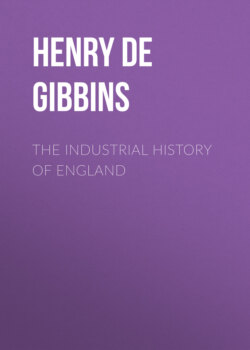Читать книгу The Industrial History of England - Henry de Beltgens Gibbins - Страница 36
На сайте Литреса книга снята с продажи.
§ 6. Economic appearance of England in this Period. Population
Оглавление—The England of the Domesday Book was very different from anything which we can now conceive, nor did its industrial condition change much during the next century or two. The population was probably under 2,000,000 in all; for in Domesday Book only 283,342 able-bodied men are enumerated. These multiplied by five, to include women and children, give 1,400,000 of general population, and allowing for omissions we shall find two millions rather over than under the mark. Nor indeed could the agricultural and industrial state of the country have supported more. This population was chiefly located in the Southern and Eastern counties, for the North of England, and especially Yorkshire, had been laid waste by the Conqueror, in {38} consequence of its revolt in 1068. The whole country between York and the Tees was ravaged, and the famine which ensued is said to have carried off 100,000 victims. Indeed, for half-a-century the land “lay bare of cultivation and of men” for sixty miles northward of York, and for centuries more never fully recovered from this terrible visitation. The Domesday Book records district after district, and manor after manor, in Yorkshire as “waste.” In the East and North-west of England, now the most densely populated parts of the country, all was fen, moorland, and forest, peopled only by wild animals and lawless men. Till the seventeenth century, in fact, Lancashire and the West Riding of Yorkshire were the poorest counties in England. The fens of East Anglia were reclaimed only in 1634. The main ports were London for general trade; Southampton, for the French trade in wines; Norwich for the export wool trade with Flanders, and for imports from the Baltic; and on the west coast Bristol, which had always been the centre for the western trade in Severn salmon and hides. At one time, too, it was the great port for the trade of English slaves who were taken to Ireland, but William the Norman checked that traffic, though it lingered till Henry II. conquered Ireland. For internal trade market towns, or villages as we should call them, were gradually springing up. They were nearly always held in demesne by the lord of the manor, who claimed the tolls, though in after years the town bought them of him. Some of these markets had existed from Saxon times, as is seen by the prefix “Chipping” (=chepinge, A.S. a market), as in Chipping Norton, Chippingham, and Chepstowe; others date from a later period, and are known by the prefix “Market,” as e.g. Market Bosworth. But these market towns were very small, and indeed only some {39} half-dozen towns in the kingdom had a population above 5000 inhabitants. These were London, York, Bristol, Coventry, Norwich, and Lincoln.ENGLAND SHORTLY AFTER TIME OF DOMESDAY, A.D. 1100–1200
DARK GREEN: Density of population greater. RED BROWN: Forest. YELLOW: Marsh.
The chief colour is Green to show that whole country was chiefly agricultural. Part of Yorks Pale to show it was waste.
The ten chief towns: 1—York.* 2—Bristol.* 3—Lincoln.* 4—Norwich.* 5—Coventry.* 6—Oxford. 7—Colchester. 8—Nottingham. 9—Winchester. And 10—London.
*Population over 5000.
